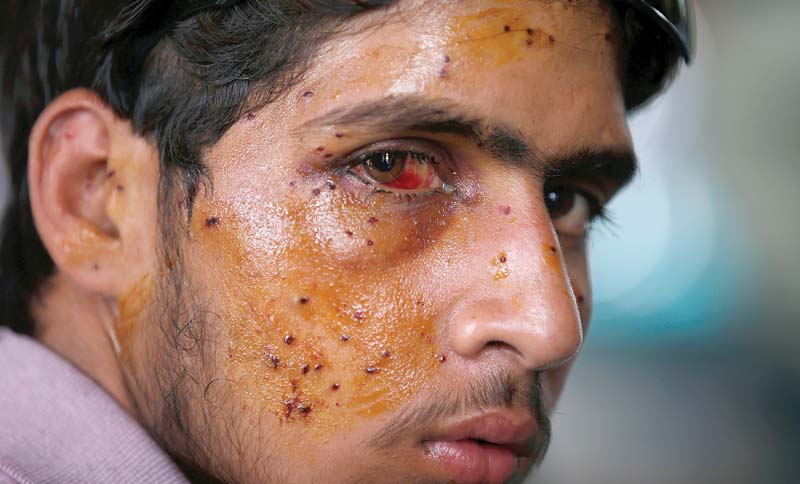
By the time I write these lines, the entire Indian-administered Kashmir has been a virtual prison for 20 days, barring relaxations in curfew in parts of northern and central Kashmir.
Anger in AJK over violence across LoC
The violence which began soon after Wani’s killing, has so far left 55 people dead. Over 3,000 civilians, the highest in a particular phase of unrest in 26 years, have been injured. India claims over 3,000 security forces have been wounded by mobs.
Nearly 1,912 people, including some as young as four, are suffering eye injuries caused by pellet guns. Some of the injured have completely lost their vision and the valley’s hospitals are overflowing with the wounded.
Kashmir is groaning with the pain and the silence of a graveyard which symbolises the region today. The pro-freedom leadership led by Syed Ali Geelani, Mirwaiz Umar Farooq and Yasin Malik remains jailed. Despite that, they have been directing protests asking people to agitate and counter the curfew with shut downs. If it is curfew on one side, it will be a shut down or a protest on the other side.

For the first time in over a decade, Kashmiris are rallying behind gun-wielding boys. Wani used social media extensively to lure young people towards “Jihad”.
US voices concern over Kashmir violence
Police admit that he did not take part in any significant militant attack but “he was more dangerous than a militant”. One police officer described Wani to be “equal to 100 militants.”
But why did his appeal bring tens of thousands to his funeral?
Since the India-Pakistan rapprochement that began in 2003, Kashmir transitioned to non-violence . But when the process was derailed after the 2008 Mumbai attacks, Kashmir was not only ignored but slowly relegated to “just a law and order problem” coupled with Pakistan sponsored trouble.
This reinforced the Kashmiris’ perception that India was not serious in resolving the Kashmir dispute. This cynicism filled the void created after talks broke down, affording space for extremists and anti-dialogue elements.
The 2013 hanging of Afzal Guru – convicted in the 2001 Indian parliament attack case – was seen as a strong message from Delhi that Kashmiris don’t matter. It pushed the people, especially the youth, to join militant ranks with recruitments jumping four times in 2015. People like Wani replaced the foreigners .
Pakistan condemns India’s killing of Hizbul Mujahideen commander in occupied Kashmir
With public support for these local militants, it seems Kashmir is slipping back to the ‘90s with a focus on people-oriented protests which at times even defy separatist leaders as it did on July 26 when a call for half day reprieve was rejected. As long as India sticks to this approach. there will hardly be any space for a political dialogue to defuse the spiralling unrest.
The writer is the editor-in-chief of Rising Kashmir, a daily English newspaper in Indian Kashmir
Published in The Express Tribune, August 1st, 2016.













































COMMENTS (8)
Comments are moderated and generally will be posted if they are on-topic and not abusive.
For more information, please see our Comments FAQ